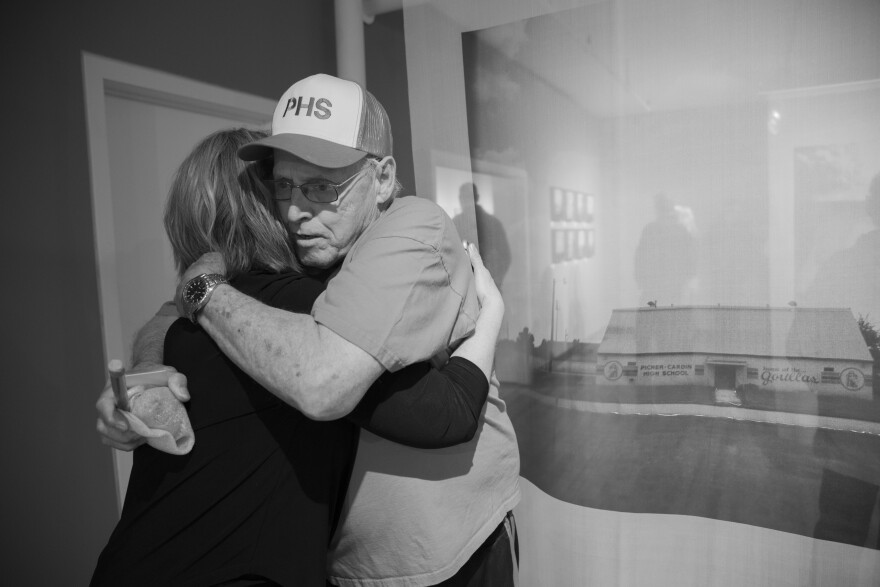For all the reasons one thinks of a small town in America — a small, blue-collar community where people leave their doors unlocked and kids play ball in the streets — Picher, Oklahoma was a fantastic place to grow up.
Ed Keheley remembers the closeness of his community.
“The adults in the community basically policed all the kids. You were afraid to do something, if anyone saw it they would immediately call your parents,” Keheley told Steve Kraske on KCUR’s Up To Date.
That was back in the 1950s. Keheley’s family moved away in 1957 because his father, who was a miner, sensed that the lead and zinc mines were giving out.
In 1980, the town was declared an Environmental Protection Agency Superfund site due to piles of toxic metal-contaminated mine tailings (known as chat) heaped throughout the area.
Unincorporated by the state of Oklahoma, the town of Picher officially ceased to exist on September 1, 2009. The 2010 census counted less than 20 persons still living there.
An exhibition on display at the Leedy-Voulkos Art Center in downtown Kansas City shows what Picher looks like today.
The artist, Sabrina Staires, grew up in Oklahoma. Her father was an environmental engineer in the 1970s and monitored waste-cleanup in many towns around Picher.
“These smaller towns became very interesting to me as I realized what [my father] was doing throughout my life,” Staires said.

She was further drawn to Picher when she heard it labeled “one of the most toxic towns in America.”
“The big thing about it, though, was the chat piles — they were so photographable as a landscape,” she said.
Pictures of those piles, which Staires said look like mountain landscapes, along with other images of the now-empty town, are printed on large, silk panels that hang in the center of the room.
“So you wander through the panels almost like wandering through a disappearing town, because they’re very sheer,” Staires said.

The photos are haunting. Staires shot them using a medium format Holga camera, known for its low-fidelity aesthetic, and stitched the panels with metallic gold thread as a tribute to the town’s former prosperity as a booming lead-mining hub.
Several former Picher residents who now live in Kansas City have visited Staires' exhibit.
Ray Moore moved to Kansas City in 1962 (he now lives in Shawnee, Kansas) because there were no good jobs left in Picher. He said seeing Staires’ exhibit was an emotional experience.

"It’s kind of like ghosts, the way [the pictures] float around in there,” Moore said. “But what you’re seeing is the sad part, you’re not seeing the good times.”
Moore said he has fond memories of growing up there with his nine siblings.
After he left Staires' exhibition, he said, he stayed outside telling people stories about Picher and what a great place it was to grow up.
Staires said those good memories are only part of the story told through her photographs.
"That was kind of the point of the exhibit, too, was to talk about how industrialization in small towns support the people and create a great atmosphere," Staires said, "but the lack of sustainability a lot of times causes a town to fall in on itself."
Sabrina Staires' "ECHO" exhibition is showing through Saturday, May 28, at the Leedy-Voulkos Art Center, 2012 Baltimore Ave. in Kansas City, Missouri.
Lisa Rodriguez is the associate producer for KCUR's up To Date. Connect with her on Twitter @larodrig.







